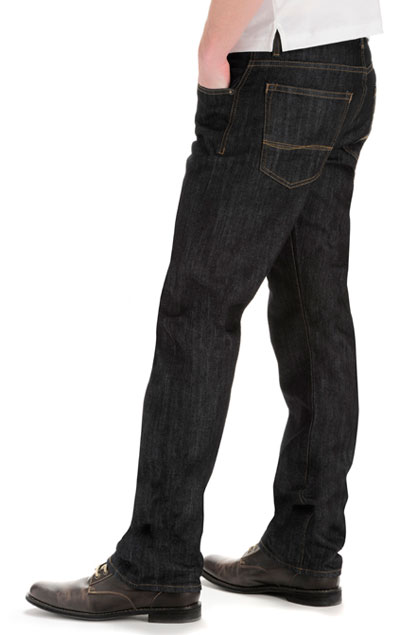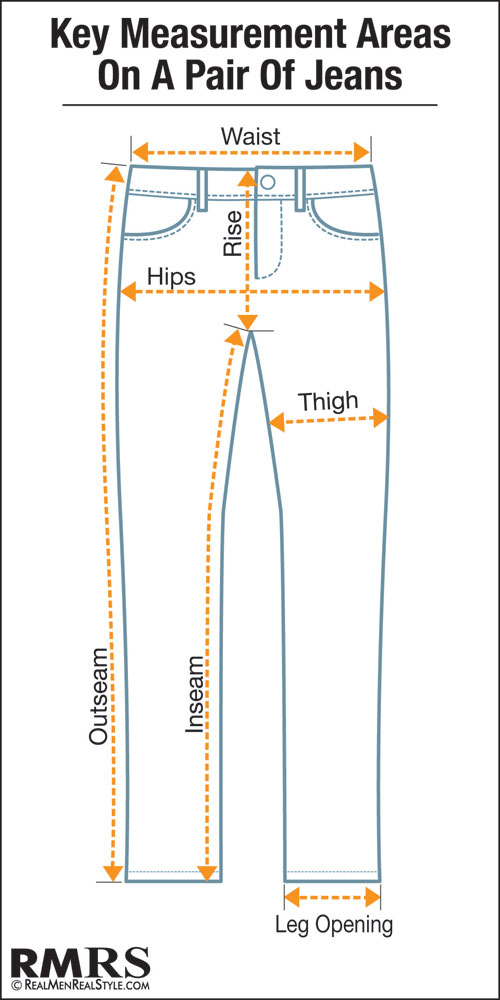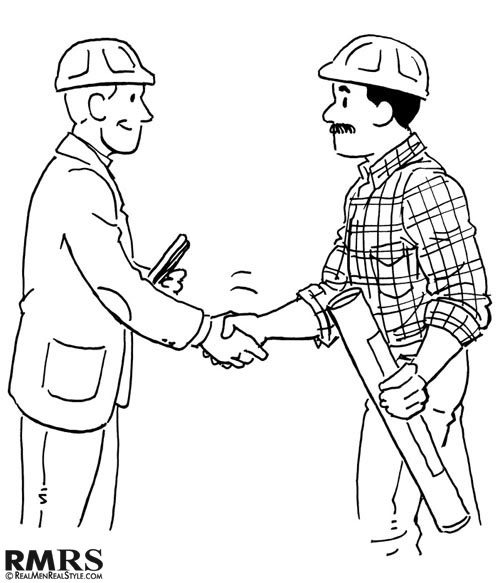Are you a man over 30?
Still wearing those stonewashed distressed jeans you’ve had since 2004?
Have you started to think that maybe it’s time to switch your denim up a little?
If you haven’t, start now.
Age – and the wisdom and strength that come with it – is an attractive characteristic in a man.
You never want to be that guy that makes people do a double-take as they think “wow, doesn’t he know he’s not 20 anymore?”
Now, relax with us here — 30, 40, 50 or beyond doesn’t mean it’s time to head to the undertaker’s and get fitted for your funeral suit.
It just means buying clothes with an eye to where you are now and where you’re headed.
If you’re looking for a place to start re-thinking your wardrobe, consider picking out a couple new pairs of jeans.
They’re just as appropriate on older men as they are on younger, and with a little attention to the style you pick they can be one of the most versatile pieces of a fashionably mature man’s wardrobe.
Buying Jeans for Men Over 30
“How hard do I really have to think about this?” you may be asking yourself.
They’re just jeans, after all. And you’re absolutely right. There’s not too much to think about here.
There are just a couple considerations a man in his 30s or over should take a look at that a man in his 20s or younger doesn’t.
1. Waist Size
Not an issue for everyone. Some of you guys are going to go from 20 to 30 to 60 to 90 with the same waist size, or close to it, and more power to you if you can pull it off.
But, if we’re being honest with ourselves, some guys have a little bit of an expanding waistline phenomenon as they age. Nothing to be ashamed of there!
If you go up a size or two, you go up a size or two, and as long as you’re healthy and happy with yourself the numbers don’t have any huge cosmic significance. They do, however, have a practical significance.
Be aware of the way your waist size affects the fit of your jeans. A few points to keep in mind:
1. Waistline – The “waist size” doesn’t necessarily sit at your natural waist. Most men wear their jeans at their hips, and that’s fine to keep doing on into your 30s and beyond.
Just be aware that it’s a broader part of your body, so the best jeans size for you may be a size wider than your dress slacks, suit trousers, etc., which are worn higher on the body.
2. Size and Fit – Waist sizes are usually tied to the size of the leg opening, the crotch, and the butt as well.
If your jeans seem too tight in the thigh, you may need to go a waist size up and either belt tighter or wear them lower on your hips — or find a different brand or fit.
3. Honesty – Be realistic about the size you need. If you’ve got a soft belly that hangs out a lot, squeezing a too-small waistband tight around it isn’t going to magically cinch all the bulk into non-existence.
Instead, you’ll squeeze half of it down into your trousers (uncomfortable) and the other half out over your belt (hideous). Get a looser fit and close it lightly over the widest part of your belly, without tugging anything tight, so that the cloth just sits comfortably on the skin.
Ideally you want jeans that don’t pinch anywhere, but that are tight enough you couldn’t step out of them without unbuttoning and unzipping all the way.
If the waist can be pulled straight down without unzipping, you’re going to need to belt it pretty tight, and that can cause an unattractive “ballooning” around your crotch and butt that’ll make you look wider in the waist than you really are.
2. Fits, Cuts, and Rises
The denim industry is jargony. Every manufacturer (and every advertiser) uses buzzwords a little differently.
There are some broad conventions, but no exacting definitions for a lot of the terms that get thrown around. Don’t bother trying to become an expert.
Things vary too much from brand to brand. The best test is always going to be the fitting room — buy your jeans live, in a store where you can try them on, or else from a brand that offers free shipping and exchanges for online orders.
Generally speaking, jeans will be defined with any or all of the following terms:
1. Fit – This will be something along the lines of “relaxed fit,” “classic fit,” “slim fit,” etc. Use it as a broad starting point and not much more.
If you’re built heavy in the middle and the legs, you probably want to start with a brand’s “relaxed” or “comfort” fit; if you’re a skinny guy who wants a tight fit, look at “slim” or “skinny” styles, and so on.
But be prepared to change it up a little, because every brand is different. You might love the regular fit from one, and the relaxed from another.
2. Cut – Most of the time this refers to the lower leg of the jeans, below the knees. Skinny or tapered cuts get narrower, classic and straight-leg cuts stay the same width all the way down, and boot cuts or wide-leg jeans widen a bit at the cuff.
Keep your sizing in mind when you pick a cuff — if you’re wearing large-waisted jeans with a relaxed fit, you may not need a boot cuff to fit over a work or Western boot.
3. Rise – This term gives an estimate of how high on the body the jeans are worn. “High-rise” usually come up to the natural waist, near the bellybutton or so, while “low-rise” just barely come up over the hips.
If it’s not specified, most jeans will usually ride a little above the hips, but as usual, it can vary from brand to brand. There is no one best combination of terms for a man older than 30.
Broadly speaking, it’s good to stay away from extremes as you age — don’t wear an ultra-high rise or a super low sag, and stay away from skinny jeans so tight they look painted on or boot cuts so wide they look like flares.
A touch of moderation makes a man look more refined and less experimental. But because there’s so little standardization, your only real course of action is to try on as many brands and styles as needed until you get a few that you really like.
Don’t get worried if the terms or even the sizes don’t match up — it’s very common to wear something like a “34-inch waist relaxed fit” from one brand and a “36-inch waist classic fit” from another brand, with comparable comfort from both.
 3. Colors and Fades
3. Colors and Fades
It’s nice to be able to say “blue jeans” and leave it at that. They’re jeans. They’re blue. What more is there, right?
Quite a bit, as it turns out! Even your basic medium blue can look very different depending on how it’s been “washed” or faded after the initial dyeing, and time and wear will create unique patterns over time.
As with cuts and fits, there are a multitude of focus-tested advertising buzzwords for dyed denim, especially in the raw denim segment.
Try not to get too hung up on the details, and instead look for colors and dyes that are going to work well in a flexible, dress-it-up or dress-it-down wardrobe:
1. Dark for Dress – When you want to look a little sharper, wear a darker shade of denim.
That doesn’t have to be black (and in fact most men look better in something a little less severe), but go for a deep indigo rather than a bright blue or a faded light blue.
It’ll give you a more neutral and a classier look for low-lit evening environments, in particular.
2. Blue for Work – Steer clear of jeans dyed in colors like red, green, and yellow unless you’re wearing them for fun-only social occasions.
If you’re into the colored denim look that’s fine, but keep it strictly on the social side.
Rock concerts and street fairs yes; cocktails with the boss or meetings with the design team, no. For outdoor labor stick with light or medium blue, and for dress-casual with deeper indigo and navy.
3. Naturally Faded – Skip the acid washed, the distressed, and the otherwise artificially “unique” treatments. A bit of natural weathering is fine when you’re wearing your jeans casually, but you want a clean dark look for dressier situations.
And by the time you hit 30, people expect you to know better than to pay someone to rip your clothes up before you even wear them…so don’t disappoint expectations, eh?
Staying within those general guidelines still gives a man plenty of ways to wear his jeans.
You can go plain-blue-cowboy, deep-indigo-dressy, artfully-faded-hipster, or any number of other looks, all while looking mature and like you care about your appearance.
The trick is to avoid extremes: of height, of color, or of fading. Make your jeans look natural and relaxed, because that’s how you want to look.
Dressing Jeans Up; Dressing Jeans Down
So you own the perfect pair of jeans now — but do you know how to wear them?
Pretty much any way you want, turns out. Jeans are versatile. Throw a good, well-fitted pair on with an equally well-fitted plain white T-shirt and you can look great — if you’ve got a cut figure and some arm strength to show off.
If you don’t, a white dress shirt with the sleeves rolled once gives you the same insouciance with a little more forgiveness for a softening figure.
To wear your jeans casually but well, pair them with very plain, simple garments, like the white shirts mentioned above, or a simple sweater in cool months.
Leather work shoes or boots give you a little added authority, and keep you from looking like a college kid in jeans and sneakers.
To dress up, keep the leather shoes but go for something a little more decorative — brogues or unusually-dyed leathers do a good job here.
Throw on a collared shirt of any kind and a casual sports jacket and you’re in business.
A really sharp pair of indigo or other dark jeans can even pair with a pretty dressy blazer or deliberately mismatched suit jacket, if you’ve got a nice shirt to tie it all together.
(But speaking of ties, no neckties with your denim, please. Jeans are sexy enough to demand an open collar, and maybe even an undone button or two on the shirtfront.)
It’s all very versatile and free-flowing. Denim should be.
Start with a good pair of jeans, and don’t pair it with anything cheap or juvenile-looking, and you’ll be looking good — from 30 to 100 and even beyond.
Source: http://www.realmenrealstyle.com/buying-jeans-over-30/









